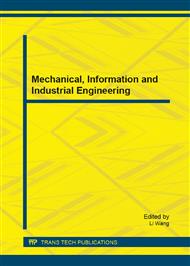p.3
p.7
p.11
p.15
p.19
p.23
p.28
p.32
Study on Properties of EPS Insulation Mortar
Abstract:
This paper deals with the aggregate-cement ratio and the influence of flue gas desulphurization(FGD) gypsum, fly ash and ground slag on the properties of EPS thermal insulation mortar. Results show that with the increase of aggregate-cement ratio, dry density and compressive strength of EPS thermal insulation mortar decreases, water absorption increases, softening coefficient decreases, meanwhile the performance of mortar becomes worse. When aggregate-cement ratio is 6% , the mortar shows the best performance. When aggregate-cement ratio reaches 7%, the mixture is loose in structure and difficult to shape. Fly ash and slag powder improves the performance of EPS thermal insulation mortar significantly, reduces the dry density, increases the comprehensive strength, water absorption and softening coefficient is improved. FGD gypsum makes insulation mortar strengthful, it plays excitation role for the activity in composite cementitious material admixture.
Info:
Periodical:
Pages:
15-18
Citation:
Online since:
March 2015
Authors:
Price:
Сopyright:
© 2015 Trans Tech Publications Ltd. All Rights Reserved
Share:
Citation:


